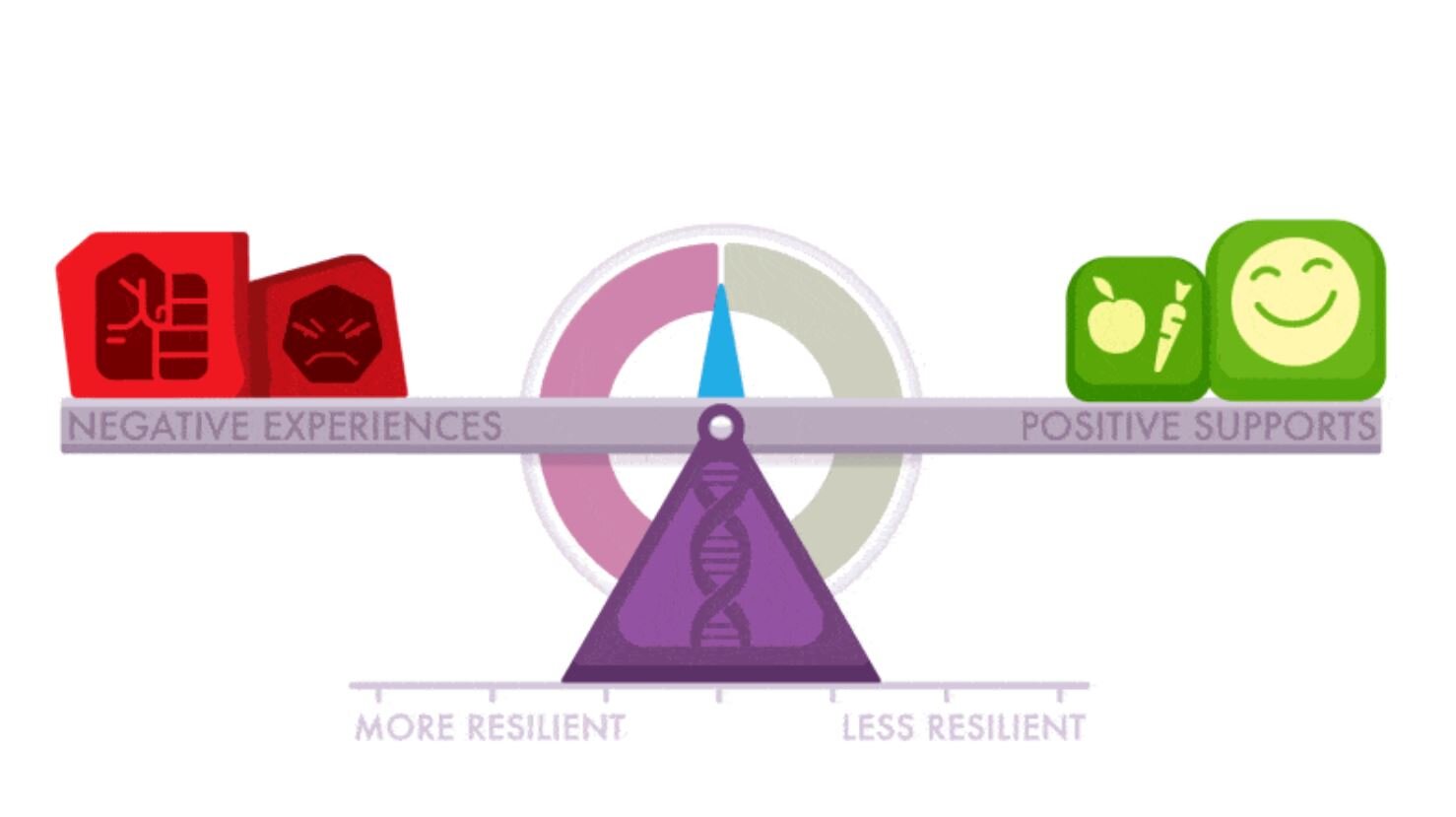The Resilience Scale
Resilience is defined by the interrelationship between our genes and life experiences. It is the brain’s capability in maintaining strong and healthy functioning under times of conflict and adversity for an individual. The ‘resilience scale’ is a metaphor used to explain and describe why some people are seemingly more resilient than others during times of duress. The metaphor itself refers to a fulcrum scale which can help to visualize how over time we can build our brain’s ability to better cope and respond to negative situations.
To picture the metaphor, imagine a scale where positive experiences add weight to one side of the beam, and negative ones add to the other side. The number and intensity of factors on each side will cause the scale to tip in favor of either direction; moreover, the position of the fulcrum (middle balance point) will have a factor in which way the scale tips. An individual’s genetic history will determine the starting position of the balance point. As some individuals are born highly sensitive to stress while some are born highly tolerable, it is that starting position of the fulcrum that affects how much positive and negative experiences will influence our lives. An individual born with a ‘struggling’ brain will start life off with their fulcrum being off-centre, where it gives greater leverage to the negative experience side of the beam.
Risk factors such as abuse, neglect, chaotic environments, and parental addiction will increase toxic stress and tip the scale towards that negative side. Scientific research into epigenetics prove that the fulcrum/balance point is not stagnant and can actually be shifted in favor of the more desired side.
Protective factors such as safe environments, learning opportunities, and responsive relationships rich with serve and return interactions will shift the fulcrum into providing more leverage for our positive experiences. This will help to improve the brain’s resilience and coping skills under times of duress - allowing ourselves to better bounce back from life adversities. A person’s resilience scale is a good indication of future health outcomes, and a heavy emphasis is placed on the experiences on the scale when a child is still in early childhood; therefore, lots can be done by parents, caregivers, teachers, and coaches, to positively influence and strengthen a child’s resiliency so that they are better equipped for success throughout their lifetime.
Sources:
Alberta Family Wellness Initiative. (2021). Resilience: Why do some of us bounce back from adversity better than others. Retrieved from https://www.albertafamilywellness.org/what-we-know/resilience-scale
Palix Foundation. (2018). Brains: Journey to Resilience [Video]. Vimeo. https://vimeo.com/245310333
